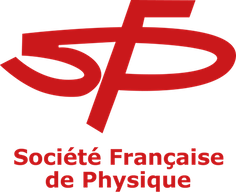Orateur
Description
En 2012 les expériences ATLAS et CMS ont conjointement découvert le boson de Higgs, particule clé du Modèle Standard théoriquement prédite dans les années 1970. Depuis les études continuent afin de mesurer les différentes propriétés de ce boson, ce qui nous permettra de reconstruire le potentiel de Higgs et de tester le Modèle Standard. Une des propriétés qui pour le moment n'a pas été mesurée et dont le résultat pourrait avoir une influence sur la baryogenèse est le couplage trilinéaire (aussi appelé auto-couplage) du boson de Higgs, qui pourra être mesuré grâce à l'étude de la production de paires de bosons de Higgs. Cependant le taux de production est tellement faible qu'il ne pourra être observé qu'avec l'ensemble des données collectées d'ici la fin du programme du LHC en 2035. En revanche plusieurs théories au-delà du Modèle Standard prédisent l'existence de particules qui se désintégreraient en deux bosons de Higgs.
Parmi les différents canaux de désintégration, le canal dans lequel le premier boson de Higgs se désintègre en une paire de photons et le deuxième en une paire de quarks b est l'un des plus prometteurs car bénéficiant de la bonne résolution du premier et du grand rapport de branchement du second.
Je présenterai plus en détail l'analyse et les enjeux de cette recherche.
In 2012, the ATLAS and CMS experiments jointly discovered the Higgs boson, a key particle of the Standard Model of particle physics. This particle was predicted during the 70's. Since the discovery, studies has been carried on in order to measure the different properties of the Higgs boson. These measurements will help us to reconstruct the Higgs potential and test the Standard Model. One of the fundamental properties which has not been measured yet is the trilinear coupling (or self-coupling) of the Higgs boson. This coupling could lead to an explanation of the baryogenesis. However the cross section is so small that we do not expect it to be observed until the end of the LHC programme in 2035. But various theories beyond the Standard Model predict the existence of new particles that can decay in two Higgs bosons.
Among the different decay channels, the decay of the first Higgs boson into a pair of photons and the second Higgs boson into a pair of b-quark is the most promising one since it benefits from the good resolution on the photons for the first one and the high branching ratio of the second one.
During the presentation I will detail the analysis and the physics implications of this search.

